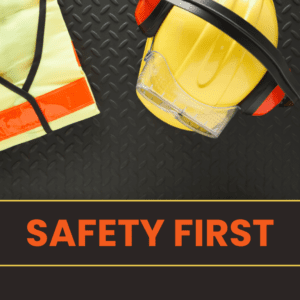Essential Building Blocks for a Safe Workplace Environment

Essential Building Blocks for a Safe Workplace Environment in the Cannabis Industry
As the cannabis industry continues to expand, businesses within the sector must prioritize creating and maintaining safe workplace environments. Safety is critical not only to protect employees but also to comply with legal regulations and ensure the quality of cannabis products. The cannabis industry operates under strict regulatory frameworks, and workplace safety plays a significant role in meeting these requirements.
A safe workplace is essential in any industry, but in cannabis, it is especially crucial due to the specific challenges posed by handling plants, managing chemicals, and adhering to stringent health and safety protocols. In this article, we will explore the essential building blocks that cannabis businesses need to implement to create a safe, compliant, and productive work environment.
Regulatory Compliance and Safety Standards
The foundation of any safe workplace in the cannabis industry begins with understanding and complying with relevant laws and regulations. Every state where cannabis is legal has its own set of regulations governing workplace safety, health protocols, and employee training. This can include rules set forth by OSHA (Occupational Safety and Health Administration), the Department of Agriculture, or state-specific cannabis control boards.
Cannabis businesses must stay informed about local, state, and federal regulations, as compliance is not only mandatory but essential for maintaining operational licenses. Non-compliance can lead to heavy fines, legal challenges, and even the shutdown of operations. Ensuring that your workplace complies with all applicable safety and health regulations is a critical building block for a successful and safe work environment.
Comprehensive Employee Training Programs
One of the most effective ways to promote safety in the workplace is through comprehensive training programs. Employees in the cannabis industry must be trained to handle various safety-related tasks, such as using protective equipment, operating machinery, or managing hazardous chemicals used in cannabis cultivation and production.
Regularly scheduled safety training sessions should cover a variety of topics, including:
Safe Handling of Chemicals: Employees should be educated on the proper handling, storage, and disposal of chemicals used in cannabis cultivation, such as pesticides and fertilizers.
Use of Protective Equipment: Workers need to know how to correctly use personal protective equipment (PPE), such as gloves, goggles, and masks, to protect themselves from exposure to harmful substances or physical injury.
Health and Safety Protocols: Regular training should emphasize hygiene practices, proper handling of cannabis plants, and cleanliness standards to prevent contamination.
Ongoing education helps employees stay up-to-date with safety protocols and makes them more vigilant in identifying and addressing potential hazards. A well-trained workforce is essential to creating a safe and secure work environment.
Proper Ventilation and Air Quality
Proper ventilation is critical in cannabis cultivation and processing facilities. Without adequate air circulation, workers may be exposed to harmful chemicals, molds, or dust particles that can cause respiratory issues. Cannabis cultivation, especially in indoor grow operations, can generate significant amounts of humidity, which can foster the growth of mold and mildew if not managed properly.
Ensuring that air filtration systems are installed and maintained can help keep the air clean and reduce the risk of health problems for workers. These systems should be regularly inspected to ensure they are functioning correctly, and businesses should take steps to maintain proper humidity and temperature levels to reduce the risk of mold and other airborne hazards.
Good air quality is a fundamental building block in maintaining a healthy and safe work environment for employees, particularly in facilities that deal with plant cultivation, extraction processes, or chemical treatments.
Ergonomic Workspaces and Safe Equipment Handling
In the cannabis industry, employees often engage in physically demanding tasks such as lifting heavy containers, working on production lines, or standing for extended periods. This can lead to strain, fatigue, and musculoskeletal injuries. To reduce these risks, businesses should implement ergonomic workspaces designed to promote safe and efficient work practices.
Key measures include:
Adjustable Workstations: Providing employees with workstations that can be adjusted to their height can prevent strain and injury. This is particularly important in tasks such as trimming plants or packaging products.
Proper Lifting Techniques: Employees should be trained in safe lifting techniques to avoid back injuries. Businesses can also provide mechanical lifting equipment for moving heavy loads.
Regular Breaks: Encouraging regular breaks helps prevent fatigue and reduces the risk of injury from repetitive motions.
Ensuring that all equipment is properly maintained and in good working order is another important aspect of workplace safety. Faulty machinery can cause accidents and injuries, so it’s essential to perform regular inspections and provide employees with training on the correct use of tools and equipment.
Hazard Communication and Risk Management
A safe workplace environment requires clear communication of potential hazards and risks. Cannabis businesses must establish hazard communication programs to inform employees about the dangers they may encounter in the workplace, such as exposure to chemicals, equipment malfunctions, or fire risks.
This can include:
Proper Labeling of Chemicals: All chemicals used in cultivation or processing must be clearly labeled with safety information, including potential hazards and proper handling procedures.
Safety Data Sheets (SDS): Provide accessible safety data sheets for all hazardous substances in the workplace, detailing their risks, handling instructions, and what to do in case of exposure.
Emergency Procedures: Employees should be well-versed in emergency protocols for situations such as fires, chemical spills, or accidents. Regular drills can help ensure that employees know how to respond quickly and effectively.
Additionally, risk management practices should be implemented to identify potential workplace hazards proactively. Regular safety audits and inspections can help cannabis businesses stay ahead of risks and take corrective actions before issues arise.
Creating a Culture of Safety
While training and procedures are crucial, fostering a culture of safety is the ultimate goal. When safety becomes part of the company’s culture, employees are more likely to take responsibility for their actions, look out for one another, and proactively address potential hazards.
A culture of safety can be cultivated by:
Encouraging Open Communication: Create an environment where employees feel comfortable reporting safety concerns without fear of retaliation.
Recognizing Safe Practices: Reward employees who demonstrate a commitment to workplace safety, whether through formal recognition programs or simple acknowledgments.
Involving Employees in Safety Initiatives: Involve employees in developing and improving safety protocols. When workers feel ownership over the safety measures in place, they are more likely to adhere to them.
Building a culture of safety helps ensure that everyone in the workplace is invested in maintaining a secure environment, making it a key component of a successful cannabis operation.
Mental Health and Well-Being
Safety in the workplace extends beyond physical safety; mental health is also an important aspect of employee well-being. The cannabis industry, like many others, can be stressful, particularly for employees working in high-demand positions or facing tight regulatory pressures.
Cannabis businesses can support mental health in the workplace by:
Offering Mental Health Resources: Provide access to mental health services, such as counseling or stress management programs.
Promoting Work-Life Balance: Encourage employees to maintain a healthy balance between their work and personal lives by offering flexible schedules or mental health days.
Creating a supportive and healthy work environment will not only help prevent burnout but also promote a more productive and engaged workforce.
The cannabis industry presents unique challenges and opportunities when it comes to workplace safety. By focusing on regulatory compliance, employee training, ergonomic workspaces, hazard communication, and fostering a culture of safety, cannabis businesses can create environments where workers thrive. Safe practices not only protect employees but also contribute to the long-term success of the business, ensuring compliance with regulations and maintaining high-quality products.
As the industry continues to evolve, businesses that prioritize workplace safety will be well-positioned to grow and succeed in this rapidly expanding market.











